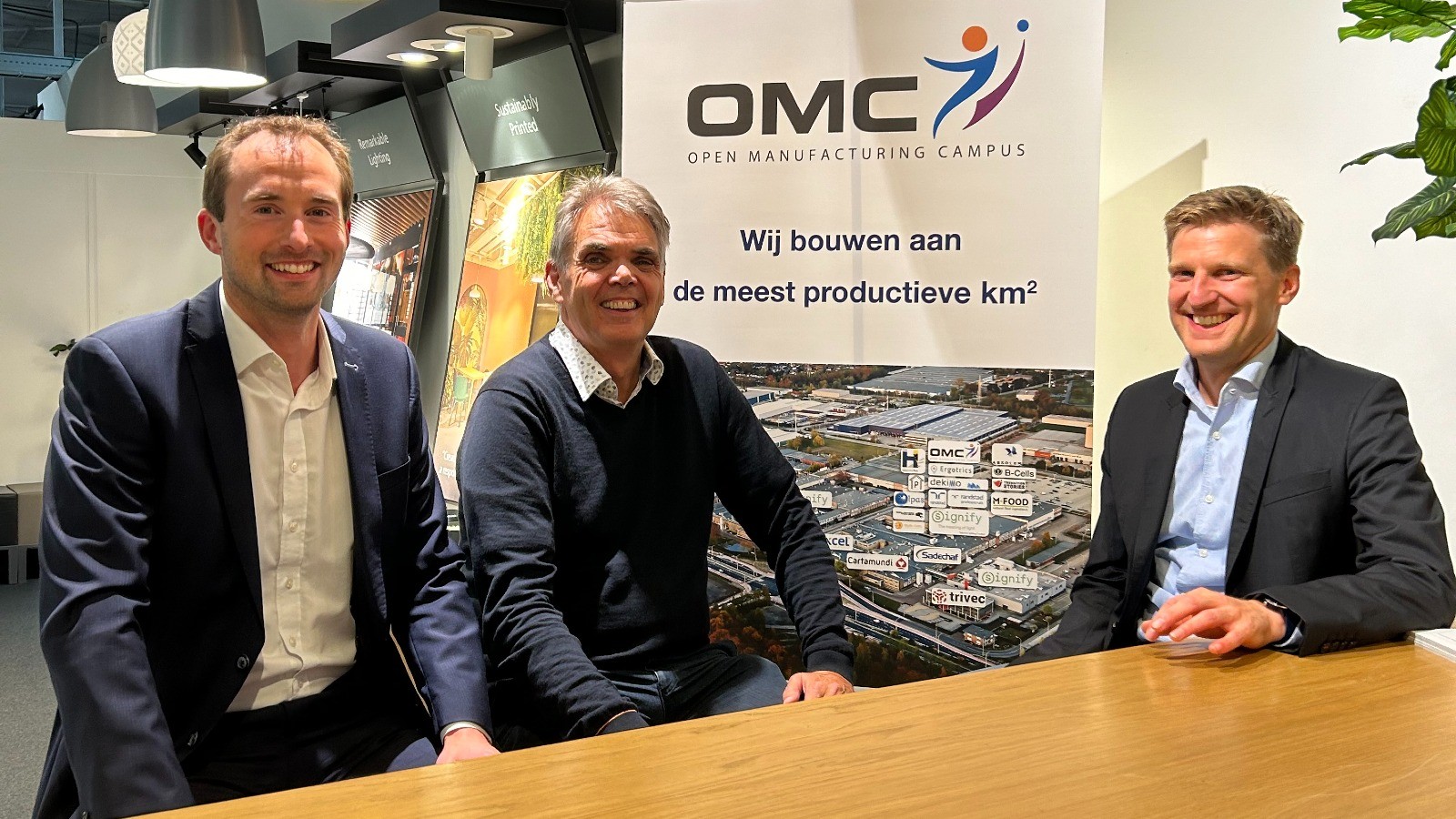Let's kick off with the first in our blog series on AI in the manufacturing industry. In this episode, the authors introduce the series by addressing the current context of AI in manufacturing and the importance of partnerships in this area. We also provide an overview of what’s to come in the next episodes and already reveal a first case study. Many more to come!
Note: this episode was made in collaboration with AI tools.
Transformative power of AI in revitalising the European industry
In the rapidly evolving landscape of the manufacturing industry, the integration of AI is emerging as a transformative force. Alongside other cutting-edge technologies such as the Internet of Things (IoT), robotics and advanced data analytics, AI is reshaping how manufacturers operate, enabling greater efficiency, personalisation and adaptability. Positioned at the forefront of the Industry 4.0 revolution, AI plays a crucial role in addressing the increasing demands for customised products, managing the complexities of modern supply chains and facilitating production at the level of single units.
Manufacturers today face mounting expectations, including the need for rapid personalisation, handling complex production processes and managing smaller, more diverse lot sizes. These challenges are further compounded by globalisation trends and competitive pressures that have historically driven the offshoring of manufacturing activities to other continents. Since the late 20th century, this shift has led to significant dependencies on external regions for essential components and materials, particularly impacting Europe with concerns over supply chain resilience and the availability of critical resources.
However, the rise of new technologies presents a unique opportunity for Europe to reestablish its manufacturing prowess and bring back key activities. By embracing innovative and competitive technologies, Europe can reduce its dependency on overseas suppliers and strengthen its position in both local and global markets. AI, as one of these pivotal technologies, offers the potential to enhance operational efficiency, as well as to drive innovation and competitiveness, enabling European manufacturers to lead in the global marketplace once again.
Many sectors and companies are currently in the exploratory phase, seeking to identify the optimal applications of AI to avoid falling behind in this technological race. In this complex and dynamic environment, collaboration and the sharing of knowledge are essential to fully harness the value of promising technologies. Recognising this, OMC and PwC have partnered to conduct a pragmatic and comprehensive study on the current applications of AI in the manufacturing industry. This collaboration aims to provide valuable insights and guide manufacturers in effectively integrating AI into their operations, ensuring they remain competitive and innovative in an ever-changing industrial landscape.
We had the opportunity to speak with both OMC and PwC to explore their key perspectives on the importance of partnerships in this critical discussion

Johan Van der Straeten
Group Supply Chain Manager at Reynaers Group and member of the board of OMC

Vincent Schollaart
Industrial Manufacturing Lead and Director at PwC Belgium

Geert Krekel
Business Development Manager of OMC

Michiel De Keyzer
Director Technology Consulting and GenAI expert at PwC Belgium
Getting to know the partnership
Can you tell us about OMC and what makes it unique?
Geert Krekel (OMC): Sure, OMC is a high-tech campus based in Turnhout. It's been home to Signify, formerly known as Philips Lighting, for over 60 years and now hosts more than 18 different companies. It's a vibrant hub for small to medium-sized enterprises involved in manufacturing, with a mission to become the most productive square kilometer out there. The campus sits on 18 hectares of well-located industrial land, with all the necessary permits for industrial activities, and offers access to energy. It has a strong legacy in development and industrialisation, along with extensive experience in operational excellence.
What’s the main focus of the OMC campus?
Geert Krekel (OMC): The campus is all about scaling up manufacturing activities by fostering open innovation. It aims to build an open innovation ecosystem that connects manufacturing companies with various stakeholders, including academics, professional services firms, solution providers and network organisations. Besides being a physical location, it's also a virtual community of like-minded professionals and an important place for industrial jobs in Turnhout and the Kempen region.

Can you give us a rundown of what PwC Belgium does and how it fits into the bigger PwC picture?
Vincent Schollaart (PwC Belgium): Sure thing! PwC Belgium is a top player when it comes to offering multidisciplinary advice to businesses of all sizes, as well as public institutions. We’re part of the global PwC network, which spans 151 countries and includes more than 350,000 employees. Our main goal is to build trust in society and tackle important issues worldwide. This mission guides everything we do and helps us measure our success.
What makes PwC Belgium stand out in the AI market?
Michiel De Keyzer (PwC Belgium): Many manufacturing companies have trusted us to update and improve their operations because we have a solid grasp of AI and know how it impacts their business. Our approach is deeply rooted in helping companies adopt and effectively use AI solutions. We combine in-depth industry expertise with a multi-dimensional understanding of what it means to implement, adopt and extract added value from AI.
In the manufacturing space, AI transforms production lines, machinery and supply chains, it also, and especially with GenAI, has a significant impact on supporting functions like HR, procurement, legal and finance.
We’re proud to say that we’re "client zero" in the adoption of AI, undergoing our own major transformation. This unique position allows us to understand the importance of moving beyond proof of concepts (POCs) to actual production use cases. We recognise the need to address the people-side of this transformation, including cultural change, adoption, and skill development.
But also, as you move on in your data journey, you need to think about:
How to organise and govern the technical landscape, ensuring the right use cases are implemented with the most suitable solutions?
The legal and ethical aspects of AI, advocating for responsible AI practices, explainability, auditability and security;
- Data, which is another critical area of focus, ensures that you have the right data, understand the quality required for various use cases, and implement robust governance.
All this needs to be brought together, in time, in a pragmatic strategy, which can be implemented and followed up upon with the right governance. And that is where we help clients, from strategy through execution. We know all the best practices, common pitfalls, and smart ways to use AI, as well as its potential challenges these days concerning ethics and governance.

The importance of setting up partnerships to establish AI in the manufacturing industry
Implementing AI in the manufacturing process is a complex task which calls for cross-industry collaboration. We asked Johan Van der Straeten and Geert Krekel from OMC and Vincent Schollaart from PwC Belgium for their opinion.
What are the main objectives of the collaboration between OMC and PwC?
Johan Van der Straeten (OMC): Great question. There’s a lot of thought leadership out there on AI, but it's hard to understand all nuances when you are not a tech expert. We had questions such as “How can we as a business benefit from AI? And how do we translate this into action?”. Therefore, we took this initiative to demystify AI for manufacturing companies. To avoid the confusion and misconceptions about AI, we decided to leverage PwC's consulting expertise and OMC's practical manufacturing experience to break down the complexities. This paper will explain what AI is, how it works, where it's already being applied today and how it can benefit manufacturing companies.
Can you elaborate on the specific AI applications you'll be focusing on?
Geert Krekel (OMC): Absolutely. We aim to identify and explain the most relevant AI applications in the manufacturing sector, such as predictive maintenance, quality control, supply chain optimisation and production planning. These applications will be illustrated with real world use cases from companies within OMC’s network and PwC’s client base. Additionally, we'll explore more generic applications relevant to any sector, focusing on supporting departments like finance, HR and sales.
How will you bridge the gap between theory and practice?
Johan Van der Straeten (OMC): By incorporating practical use cases, we aim to show how AI has been successfully implemented in manufacturing settings. These examples will offer valuable insights and lessons learned, making the transition from theory to practise much smoother. Additionally, by understanding the real implementations, other companies will be able to capture value earlier and not get lost in many experiments that don't result in real benefits.

What’s the overall goal in terms of democratising AI?
Geert Krekel (OMC): By sharing both the business perspective and practical use cases, we want to facilitate learning across our OMC community and ecosystem, as well as our client base. We believe that joining forces and exchanging knowledge is crucial for our overall competitiveness in Flanders.
What are the key benefits of this collaboration?
Vincent Schollaart (PwC Belgium): The close collaboration combines OMC’s deep industry knowledge and innovative environment with PwC’s strategic and technological expertise, resulting in a comprehensive and practical approach to AI in manufacturing.
Additionally, the collaboration between the OMC and PwC also creates a strategic effort to advance the understanding and application of AI in the manufacturing industry. If we take away the mystique from AI, showcase relevant applications and provide practical guidance, our joint efforts will empower manufacturing enterprises to leverage AI for enhanced productivity and innovation. I want to stress that this partnership underscores the importance of cross-sector collaboration as it sets a precedent for future initiatives aimed at fostering technological advancement in manufacturing.

Coming up: practical insights on AI in manufacturing
Over the series, our aim is to provide a comprehensive, multi-faceted view of how AI is shaping the manufacturing industry and how to practically approach it. Offering bitesize pieces of information, each episode zooms in on a specific aspect:
The game-changer – roles and impact of AI
Firstly, we highlight the various ways AI can enhance business activities (roles of AI) as well as what levers AI potentially impacts. Both the role and the impact of AI are crucial elements to consider when identifying and evaluating potential use cases, which is why we turn our focus here first.
The collaborators – navigating the AI ecosystem
Looking across the borders of a company’s own activities, different players in the business ecosystem are contributing to AI implementations. By exploring the key players and their roles, we aim to provide an understanding of how to leverage your ecosystem and collaborate towards valuable AI implementations.
The human element – workforce and regulations
AI isn't just about technology; it's about people. This episode delves into how introducing AI impacts your workforce. We'll identify different personas and how AI affects each one. We’ll discuss strategies for engaging and upskilling your workforce, as well as the broader social implications and the regulatory landscape. Considering these elements, we look at the success factors and pitfalls.
The road ahead – future trends and getting started
Finally, the future of AI will be explored, both in general and in relation to individual companies. What are some of the emerging trends? And how can you get started in a practical manner? Let’s find out.
Each episode will be enriched with tangible, real world case studies, showcasing how companies are leveraging AI to transform their operations. Join us on this journey to unlock the full potential of AI in manufacturing.
Case: Reynaers Group – visual recognition in AI
Let’s start with our first use case, Reynaers Group, a leading European provider of aluminium and steel solutions for windows, doors and facades. Founded in 1965 in Belgium, this family-owned company operates in over 40 countries, employs more than 2,600 people, and has a turnover exceeding 700 million euros. Reynaers Group offers a wide range of innovative and high-quality products and services for architects, fabricators and end-users.
A key challenge for Reynaers Aluminum, part of the Reynaers Group, is maintaining product quality and consistency across different markets and production sites. This relies heavily on the expertise of their operators, who perform tasks such as coating and assembling aluminium profiles. These tasks are complex and require high accuracy, especially with a catalogue of over 3,000 different profiles.
To support its operators, Reynaers Group has developed an AI solution for visual recognition using computer vision and machine learning. This solution includes an add-on camera on the production line that recognises aluminium profiles and their features (dimensions, shapes, angles, holes, etc.) matching it with the ERP system. The technology provides feedback and guidance to workers on complex profiles, ensuring accurate coating and alerting them to specific quality attention areas.
We spoke with Plant Manager Kenni Lembrechts, who played a central role in this pioneering project. Let’s dive deeper into the solution!
Can you start by introducing the key players involved in this initiative?
Kenni: Absolutely. At the heart of this project, we have several main stakeholders. First, our customers, who heavily rely on us to guarantee constant high service levels with proper quality and to remain a reliable partner for their businesses. Customer centricity is at the heart of our strategy. Second, our operators, whose expertise we aim to enhance by providing them with the right amount of information at the right time to make their work easier and to reach higher quality output. Then, there's the production site itself, which is moving along this pioneering path to retain its competitive advantage and market share.
That's a diverse group! Can you tell us about Reynaers Group and the specific problem you were facing?
Kenni: Of course. Alural is part of the Reynaers Group. Its activities focus on the powder coating of aluminium profiles for architectural usage. The main problem we wanted to solve was to increase the availability of specific operational information on the paint line, which is needed to attain the next level of high quality output. This information is already present and available in the local ERP system, but not in real time on the paint line.
What were the main challenges you faced before considering an AI solution?
Kenni: The primary challenge was figuring out how to ensure all the information in our ERP system can flow through and synchronise with the production line. There's a 3-hour gap between the profiles being put on the start of the line and where they are sprayed/coated. This was identified as a crucial step if we want the paint operator to take a proactive approach towards setting the right parameters on the paint robot. We needed to communicate the right information about the state of the profiles at the right time to the operators.
So, what exactly does the AI solution entail?
Kenni: Simply put, the solution involves scanning profiles and matching them with the information in our ERP system. We faced two primary problems: first, using a stabilisation band to eliminate any unintended movement of the profiles on the production line, and second, dealing with look-alike profiles which could lead to a mix-up of the information link. With over 5,000 different profiles to match, the system sometimes struggles to detect small differences, so we set a 95% probability threshold for the AI system, the other 5% involve a manual check and matching by our experienced operators on the paint line.

That’s fascinating. Could you walk us through the implementation process?
Kenni: Sure. We started with a POC, followed by the implementation. The technical placement of the cameras and the stabilisation band has been completed. The next step is testing communication between the ERP system and the production line. We’ll conduct a full-scale test on one of the coating lines in our Lummen plant by October this year. Eventually, we plan to expand this to all our paint lines and facilities in Tisselt and Lummen, and we’re also starting up a new coating facility in Poland.
That sounds complex. How did you plan to address these challenges with AI?
Kenni: Even though the profiles don’t have any markings, we still need to be able to recognise them. Using a camera with AI technology seemed the only valid approach to scan the profile section heads and match them with the technical drawings in the orders. Therefore, we needed to know the contents of each of the chassis that we bring to the paint line. This information is then communicated to the AI camera system for positive matching. In the 3-hour gap between scanning the chassis and actual spraying, there's sufficient time to process and display all critical data to the operators working at the spraying booths.
How did the operators react to this new system?
Kenni: Interestingly, the more experienced operators were more reluctant to start this project as they felt that their vast experience would be less valued in the future, while younger paint operators admitted they sometimes lacked the knowledge and experience. They believed this project would help them to catch up with the more experienced operators. In the end, everyone agreed that the project has a big potential to increase the quality of our paint work and that everybody would benefit from it, especially our customers.
What were the results and impacts of implementing this AI solution?
Kenni: A high-level business case was established. Currently, we rely on the generic information that the operator has, but we estimate that many recurring problems can be avoided. We aim to eliminate at least 50 % of these recurring problems, improving customer service with no disruption in planning and ensuring orders are delivered first time right.

That’s impressive. Were there any lessons learned during the implementation?
Kenni: Definitely. Learn from your mistakes and don’t be afraid of exploring uncharted territory. We had to solve several unexpected technical problems during the POC, sometimes by trial and error. In the end we came to a working solution but also learned that operator involvement, sometimes only for a very limited amount such as 5%, can be crucial to make an AI project a success.
What are the future implications of these lessons for other projects?
Kenni: The initial aim was for the AI tool to avoid coating errors, but it has the potential to automate production line settings and quality control, such as detecting powder type and colour. We plan to continue with a follow-up project focused on quality control at the end of the production line using new hardware and AI tools. The insights gained here will undoubtedly benefit these future endeavours.
Thank you for sharing this incredible journey. It’s inspiring to see how AI is transforming industries and solving real-world problems. Any final thoughts?
Kenni: Thank you for having me. This project shows the potential of AI in manufacturing, and we’re excited about the future possibilities it holds for Reynaers Group, Alural and beyond.

We hope you enjoyed learning about our first use case featuring Reynaers Group. It's a great example of how AI can help manufacturing companies improve quality, efficiency and innovation by applying advanced technology to both core and supporting processes. Throughout the series, more of these interesting stories will be told to bridge the gap between theory and practice.
In the next episode, we’ll discuss how the different roles of AI can be game-changers for real impact on your business. Plus, we’ll present and discuss another use case of AI in manufacturing, from a different sector and region, and with a different application and value proposition. Stay tuned for more!
Download our first episode
Introducing the transformative forces of AI in manufacturing
Artificial intelligence that drives real impact
Discover our generative AI Pathways
AI in Business
Artificial Intelligence isn't just a set of tools. AI heralds a new era.












